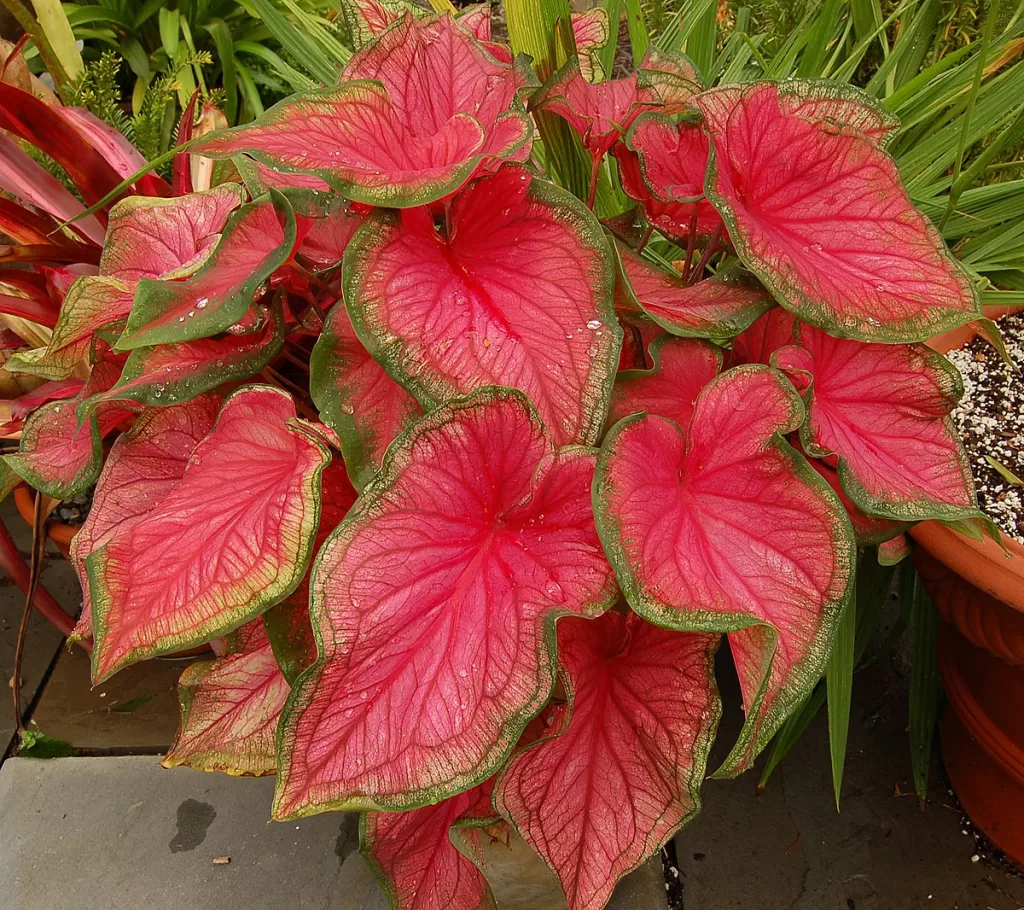Caladiums are beautiful tropical plants that are prized for their colorful leaves. They are easy to grow and care for, and can be grown indoors or outdoors.

How to grow caladiums
- Planting: Caladiums can be planted in the ground or in containers. If planting in the ground, wait until the soil has warmed up to at least 65 degrees Fahrenheit. If planting in containers, use a well-draining potting mix. Plant the bulbs about 2 inches deep and 4 inches apart.
- Watering: Caladiums need regular watering, especially during hot weather. Keep the soil moist, but not soggy.
- Fertilizer: Caladiums should be fertilized every 2 weeks with a balanced fertilizer.
- Sunlight: Caladiums prefer partial shade. Too much direct sunlight can scorch the leaves.
- Pests and diseases: Caladiums are susceptible to a few pests and diseases, including aphids, spider mites, and leaf spot. If you see any problems, treat them immediately with an appropriate pesticide or fungicide.

How to care for caladiums
- Watering: Caladiums need regular watering, especially during hot weather. Keep the soil moist, but not soggy.
- Fertilizer: Caladiums should be fertilized every 2 weeks with a balanced fertilizer.
- Sunlight: Caladiums prefer partial shade. Too much direct sunlight can scorch the leaves.
- Pests and diseases: Caladiums are susceptible to a few pests and diseases, including aphids, spider mites, and leaf spot. If you see any problems, treat them immediately with an appropriate pesticide or fungicide.
Winter care: In colder climates, caladiums should be dug up and stored indoors during the winter. To do this, dig up the bulbs after the first frost. Allow the bulbs to dry for a few days, then store them in a cool, dry place. In the spring, replant the bulbs in the garden or in containers.
Propagation: Caladiums can be propagated from seed or by dividing the bulbs. To propagate from seed, sow the seeds in a well-draining potting mix in the spring. The seeds will germinate in about 2 weeks. To propagate by dividing the bulbs, dig up the bulbs in the spring and carefully separate the smaller bulbs. Plant the smaller bulbs in a well-draining potting mix or in the garden.
Troubleshooting
- Leaves are wilting: This is usually caused by underwatering. Water the plant more often.
- Leaves are turning yellow: This can be caused by overwatering, underwatering, or too much direct sunlight. Water the plant less often, move it to a shadier spot, or fertilize it with a balanced fertilizer.
- Leaves are covered in spots: This is usually caused by a fungus. Treat the plant with a fungicide.
- Leaves are eaten by pests: This is usually caused by aphids, spider mites, or beetles. Treat the plant with an appropriate pesticide.
- Caladiums are a great way to add color to your garden or patio. They are available in a wide variety of colors, so you can find one that perfectly matches your décor.
- Caladiums are relatively easy to care for, but they do require some attention. Be sure to water them regularly, fertilize them every 2 weeks, and protect them from pests and diseases.
- With a little care, your caladiums will thrive and provide you with years of enjoyment.

